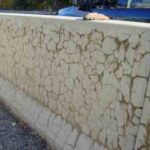The bond between concrete and steel is a crucial factor in structural integrity. As concrete ages, this bond often weakens. This article outlines the procedure for conducting a pull-out test to evaluate bond strength.
In tests with plain rebars, the maximum load typically coincides with the moment of initial slip. In contrast, deformed bars can sustain increased loads even after significant slip occurs. Therefore, it is beneficial to compare both types of bars in a single experiment.
Indian Testing Method
Specimen Sizes
- 100 mm cube: for rebars with a diameter of 12 mm or smaller
- 150 mm cube: for rebars larger than 12 mm but smaller than 25 mm
- 225 mm cube: for rebars with a diameter greater than 25 mm
Deformed Rebar Setup
The rebar should be centred within the cube. One end must be sufficiently long to secure it in the pull-out apparatus, while the other end should extend about 1 cm beyond the concrete surface. To prevent splitting, reinforce the concrete cube with a 6 mm diameter plain mild steel helix at 25 mm intervals, matching the cube size.


To control the bonding length, PVC pipes can be utilized to separate the rebar from the concrete, although this method is not specified in IS 2770.
Testing Procedure: Apply the load gradually, ensuring displacement does not exceed 1.25 mm/min. Continue loading until one of the following occurs: (a) the steel bar yields, (b) the concrete fails, or (c) slippage reaches 2.5 mm at the loaded end. Note that the slip at the opposite end may vary. For bond stress calculations, use the bond resistance measured at 0.025 mm of displacement at the free end.
Reference:
- [1] IS 2770 ( Part I ) • 1967 Methods of testing bond in reinforced concrete , Part 1 – Pull out test, Bureau of Indian Standards








